RUBBER-GRAVEL MIX (SBRA)
Rubber-Gravel Mix (SBRA) is a blend of recycled rubber and natural aggregate with a resin binder to offer a seamless, porous, low maintenance bound surface for pedestrian pathways, cycle tracks, golf courses, patios, courtyards and tree pits.
It can be used as a base underneath products like wet pour, artificial grass or bound gravel, or as a stand-alone surface. Porous and slip resistant, Rubber-Gravel Mix allows for sustainable drainage in cities, towns and countryside.
Rubber-Gravel Mix (SBRA) is a blend of recycled rubber and natural aggregate with a resin binder to offer a seamless, porous, low maintenance bound surface for pedestrian pathways, cycle tracks, golf courses, patios, courtyards and tree pits.
It can be used as a base underneath products like wet pour, artificial grass or bound gravel, or as a stand-alone surface. Porous and slip resistant, Rubber-Gravel Mix allows for sustainable drainage in cities, towns and countryside.
- COLOUR CHART
- PROJECTS
- BUILD UP
- AFTERCARE
- FAQ’S
*Colours shown are for reference only. For exact colour matches, please request a sample.

Gold Rubber-Gravel Mix

Red Rubber-Gravel Mix

Silver Rubber-Gravel Mix
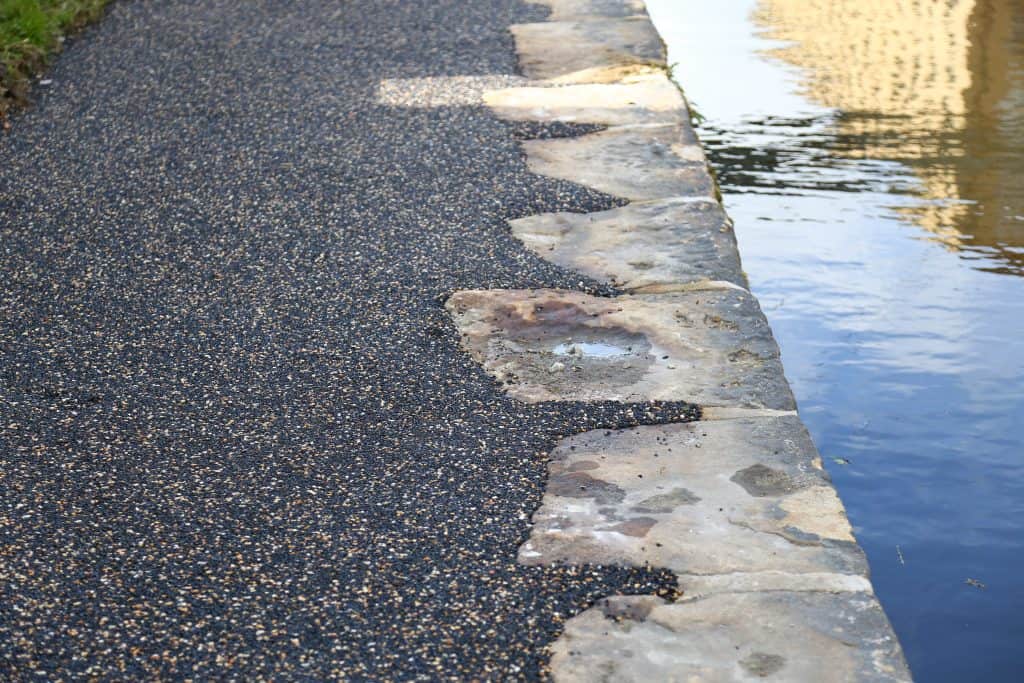
Site Name: Huddersfield Canal
Location: Huddersfield
Surface Type: Rubber-Gravel Mix
DCM Surfaces were delighted to work on the project to install over 3000m2 of Rubber-Gravel Mix along Huddersfield Canal Path.
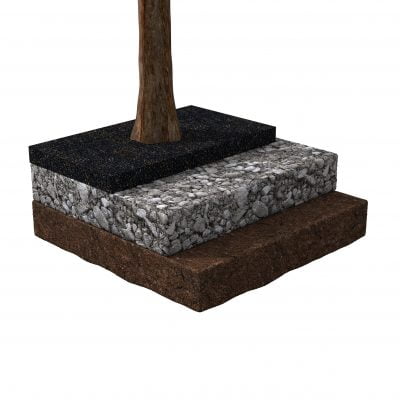
Rubber-Gravel Mix Tree Pits

Rubber-Gravel Mix onto Concrete
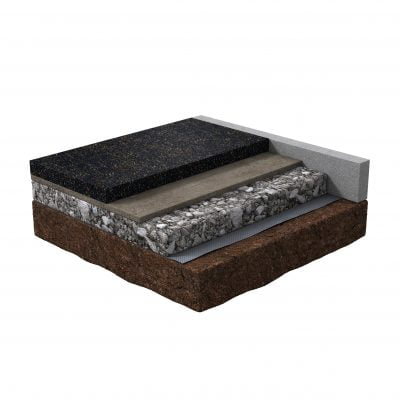
Rubber-Gravel Mix onto Flags
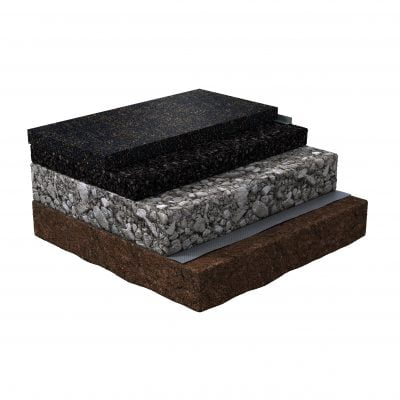
Rubber-Gravel Mix onto Tarmac
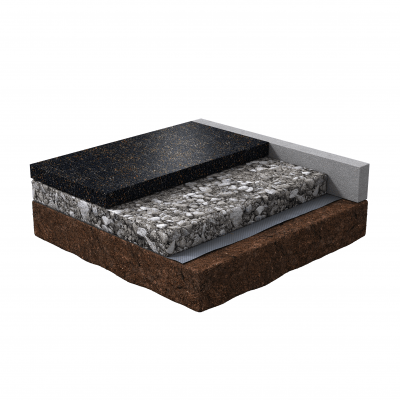
Rubber-Gravel Mix onto MOT

Rubber-Gravel Mix Mound
RUBBER-GRAVEL MIX INSPECTION AND MAINTENANCE GUIDE – Download
Q. What are the main advantages of rubber-gravel surfacing when compared to resin bound gravel?
A. Typically, rubber-gravel mix is cheaper, more porous and provides enhanced slip resistance. The rubber element is from recycled sources and the overall feel is soft underfoot, making it a much more appealing pathway solution.
Q. Does rubber-gravel mix require maintenance?
A. Rubber-gravel mix should be swept regularly to avoid a build-up of debris, resulting in the surface becoming less porous. Periodic jet washing is also recommended using a low-pressure setting.
Q. Will there be any changes to the rubber-gravel mix during extreme weather?
A. The rubber-gravel mix is highly porous, so water will run through the surface and into the ground. This prevents the water from pooling on top of the surface.
Q. What temperature should rubber-gravel mix be laid in?
A. The air temperature should be a minimum of 5 degrees and the surface temperature should be a minimum of 3 degrees above dew point (the temperature at which condensations forms).
Q. What can rubber-gravel mix be laid onto?
A. Rubber-gravel mix can be installed onto compacted MOT type 1 stone, concrete or asphalt. Thickness varies depending on the subbase type to ensure adequate strength.
Q. Can vehicles be driven on rubber-gravel mix?
A. Rubber-gravel mix can accommodate light weight vehicles travelling across the surface (e.g. golf buggies), and is suitable for bicycle traffic. It is not suitable for regular motorised vehicle use.
Q. How long will the rubber-gravel mix last for?
A. This will depend on how heavily it will be used and how it is maintained. DCM have been back on sites over 10 years old where the rubber-gravel surfacing is still in good condition.
Q. Can rubber-gravel mix be laid in the rain?
A. Unfortunately, rubber-gravel mix can only be installed in dry weather conditions.